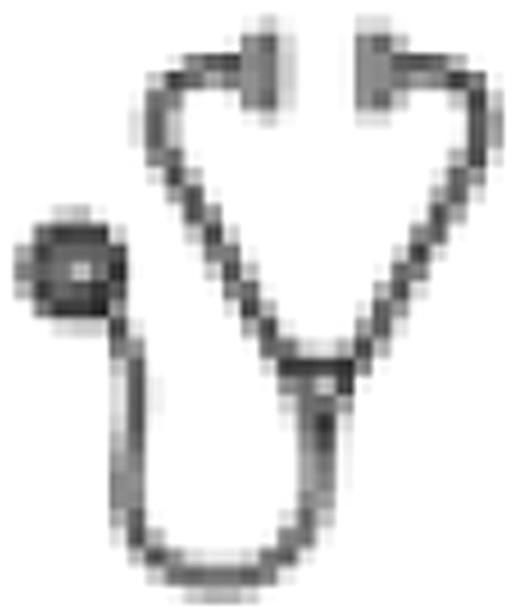Abstract
Abstract 2304
Hemorrhagic cystitis (HC) is a major complication after allogeneic hematopoietic stem cell transplantation (SCT), and is life-threatening in severe cases. Early onset HC is usually due to toxic effects of conditioning regimen, while late onset HC is caused by viral or bacterial infection, and GVHD. In order to find out risk factors and to analyze prognosis of late onset HC, we retrospectively reviewed data in our institution from 1996 through 2009.
We analyzed 232 cases having underwent allogeneic SCT (AML; 65, MDS; 42, ALL; 44, ML; 44, others; 37), excluding 22 patients who received second allogeneic transplantation. The median age at SCT was 47 years old (range, 13–72), and median follow-up of survivors was 1529 days (range, 99–4822) after SCT. One-hundred and eleven patients received from related donor, and 121 from unrelated. Conditioning was myeloablative in 139 cases, and reduced intensity (RIC) in 93. Myeloablative regimen was cyclophosphamide (CY) plus total body irradiation (TBI) in 79 cases, and busulfan (BU) plus CY in 54, while RIC regimen was fludarabine (Flu) plus melphalan (Mel) plus BU in 52, and Flu plus Mel plus TBI in 12. Disease status at SCT was controlled (partial or complete remission) in 164 cases, and progressive in 68. Prophylaxis for acute GVHD consisted of calcineurin inhibitor (cyclosporine; 106 cases, tacrolimus; 126 cases), short term methotrexate (158 cases), and corticosteroid (73 cases). Acute GVHD occurred in 121 cases, 92 of them were grade II-IV, and 74 were treated with corticosteroid. Cytomegalovirus (CMV) antigenemia was positive in 82 cases after engraftment. Definition of late onset HC was microscopic or macroscopic hematuria with urinary symptoms occurring after 7 days from SCT. Urine culture and virological analysis (polymerase chain reaction of CMV, adenovirus [ADV], and BK virus DNA) were carried out in all cases with HC. Treatment was mainly hydration and intravenous hemostat, including intravenous immunoglobulin (IVIg) and antiviral agents.
HC was reported in 43 cases on a median of 36 days (range, 7–469) after SCT, and 31 of them (72.1%) recovered after a median of 21 days (range, 2–252). Cumulative incidence of HC after 1 year from SCT was 21.6% (95% confidence interval [CI] 18.3–24.7%). In univariate analysis, risk factors identified included age over 45 years old (p=0.04), progressive disease status at SCT (p=0.04), myeloablative conditioning (p=0.04), acute GVHD grade II-IV treated with corticosteroid (p=0.01), and positivity of CMV antigenemia after SCT (p<0.01). On multivariate analysis, older age (p<0.01, hazard ratio [HR] 2.63), myeloablative conditioning (p<0.01, HR 4.32), and positivity of CMV antigenemia (p<0.01, HR 3.61) remained independent predictors. Each HC case was graded according to National Cancer Institute Common Terminology Criteria for Adverse Events (grade 1; 12, grade 2; 19, grade 3; 12, grade 4 to 5; none), and we defined moderate as grade 1 or 2, and severe as grade 3 or more. In subgroup analysis of patients with HC, myeloablative conditioning (p=0.11, Odd's ratio [OR] 5.24) and positivity of ADV in urine (p=0.10, OR 3.17) tended to be associated with severe HC. Recovery rate from HC was inferior and median duration from onset to recovery was longer in severe HC (25.0%, 121 days) with significance (p<0.01) compared with moderate HC (90.3%, 17.7 days). Using of IVIg or antiviral agent (vidarabine, gancyclovir, or foscarnet) did not improve recovery rate in both groups. Overall survival (OS) at 1 year after day 35 landmark had no significance between cases with and without HC (59.7%, 56.7%, p=0.70), significantly poor in severe cases (16.7%, p<0.01) compared to cases with moderate HC and cases without HC. Treatment-related mortality (TRM) at 1 year after day 35 landmark was 25.0% with HC and 29.0% without HC (p=0.35), while 59.1% in patients with severe HC (p=0.01).
Five significant risk factors of HC such as older age, progressive disease status, myeloablative conditioning, acute GVHD, and CMV antigenemia were found out in this study. OS and TRM of patients with all the grade of HC were equivalent to those without HC, while severe HC significantly elevated TRM and shortened OS. Severity of HC was related to myeloablative regimen and ADV in urine. Any successful attempts to prevent severe HC have not been established yet, and novel prophylactic and pre-emptive strategies are warranted.
No relevant conflicts of interest to declare.

This icon denotes an abstract that is clinically relevant.
Author notes
Asterisk with author names denotes non-ASH members.

This feature is available to Subscribers Only
Sign In or Create an Account Close Modal